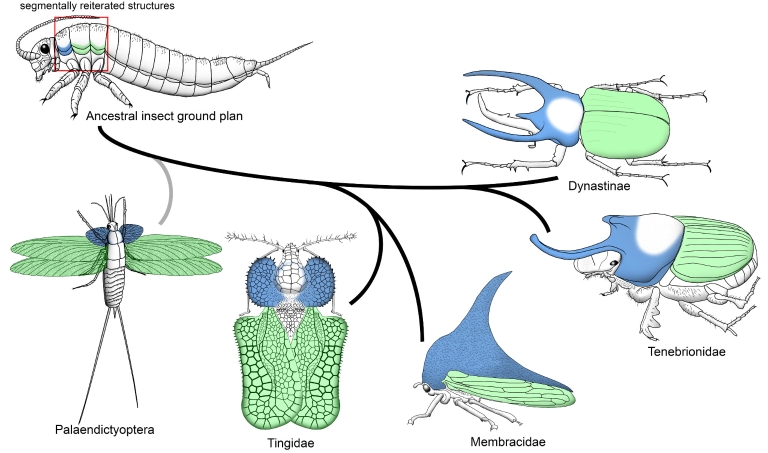Realization that thoracic horns are built by the same gene network as wings reframes traditional ideas about emergence of 'new' traits.
When studying how organisms evolve, biologists consider most traits as derived from some earlier version already present in their ancestors. Only a very few traits are regarded as truly "novel."
Insects were wingless, then winged. Animals were blind, then had eyes.
And in biology textbooks, novelty has a strict definition: It must have no relationship to any structure found in an ancestor and no relationship to any other body part elsewhere in the organism.
By this definition, a dolphin's pectoral fins are not a novelty because they are modified forelimbs that already existed. Some experts argue that this creates a problem since it means that novelty must seemingly arise from nothing.
Now evidence has emerged—in a study published Nov. 21 in the journal Science—that better illuminates how new traits can evolve. And this evidence has come from an unexpected source: the small yet charismatic dung beetle.




 The College of Arts
The College of Arts